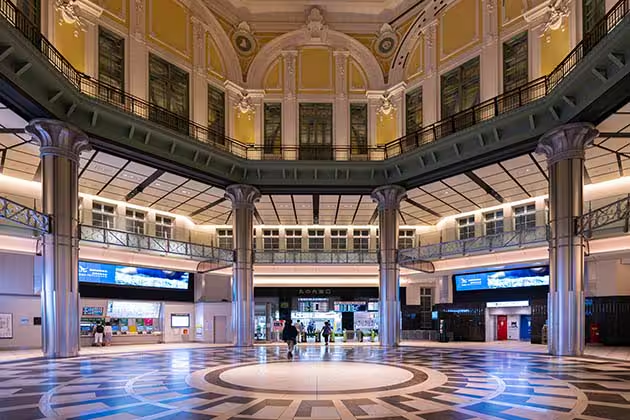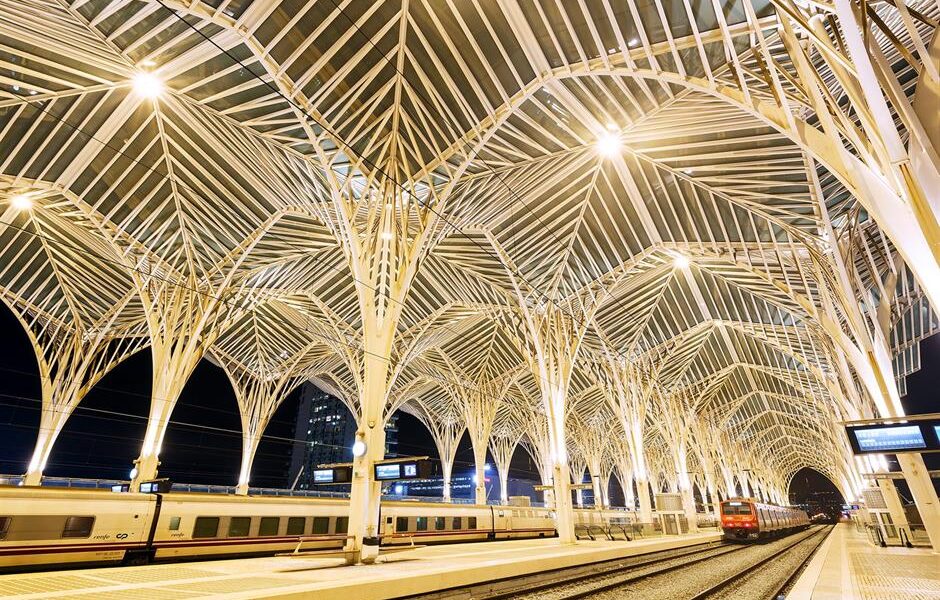Train stations are often seen as mere transit points, places to wait for a train to take us to our next destination. However, around the world, there are some train stations that stand out not only for their functionality but also for their extraordinary design, history, and cultural significance. Here’s a look at some of the most unique and captivating train stations across the globe.
Grand Central Terminal [USA]

Grand Central Terminal is more than just a transit point; it’s an iconic symbol of New York City. Opened in 1913, this Beaux-Arts architectural marvel is famous for its celestial ceiling, which features a stunning mural of the zodiac signs. With its grand chandeliers, marble floors, and timeless elegance, it has appeared in countless movies and books. As one of the busiest stations in the world, Grand Central is a living piece of history, where the past and present meet under one monumental roof.
Tokyo Station [Japan]

Tokyo’s Tokyo Station is the epitome of Japan’s blend of tradition and modernity. Opened in 1914, the station retains its red-brick exterior that echoes European Renaissance architecture while seamlessly integrating modern high-speed Shinkansen (bullet train) technology. Its distinctive dome-shaped roof and classical design stand in sharp contrast to the bustling, futuristic city around it. Tokyo Station is a symbol of the country’s rich history and its rapid advancement in technology.
St. Pancras International [UK]

Known for its striking Gothic Revival style, St. Pancras International is one of London’s architectural jewels. Originally opened in 1868, it was transformed into an international terminal for Eurostar services in 2007, after the Channel Tunnel had been operating since 1994. The station features a massive iron and glass roof, along with a towering spire that makes it impossible to miss. Inside, visitors can marvel at its grandeur, with elegant staircases, marble pillars, and the famous statue of poet John Betjeman, who helped save the station from demolition.
Gare du Nord [France]

Paris’s Gare du Nord is one of Europe’s busiest and most historically significant train stations. Built in 1864, it combines classical French architectural elements with industrial design. The massive façade, adorned with sculptures representing various countries served by the station, exudes grandeur. With direct links to international destinations like London via the Eurostar, Gare du Nord serves as a vital cultural and transport hub for the French capital.
Antwerp Central Station [Belgium]

Known as the “Railway Cathedral,” Antwerp Central Station is a stunning example of Belgian architecture. Opened in 1905, the station features a striking blend of iron, glass, and marble. Its central hall boasts an enormous dome, while the grand staircases and intricate mosaics add to the station’s opulence. It’s often regarded as one of the most beautiful train stations in the world and serves as a crucial transportation link for both local and international trains.
Chhatrapati Shivaji Maharaj Terminus [India]

A UNESCO World Heritage site, Chhatrapati Shivaji Maharaj Terminus (formerly Victoria Terminus) is a remarkable fusion of Victorian Gothic Revival and Indian architectural styles. Completed in 1887, this station is known for its grand facade with intricate carvings, towers, and arches. It stands as a testament to India’s colonial history and its evolving cultural identity. Beyond its architectural beauty, the station is a bustling hub for millions of passengers each day, connecting Mumbai to the rest of the country.
Cairo Railway Station [Egypt]

Cairo Railway Station, also known as Ramses Station, is a bustling hub in the heart of Egypt’s capital. The station itself is an architectural blend of colonial and Islamic designs, with its stately clock tower and grand entrance hall. Dating back to 1856, it has been the main station for long-distance rail travel throughout Egypt and beyond. Its historical significance as a cultural landmark, coupled with its lively atmosphere, makes it a fascinating place for travelers to pass through.
[Contributed By Anushka Gaikwad]











